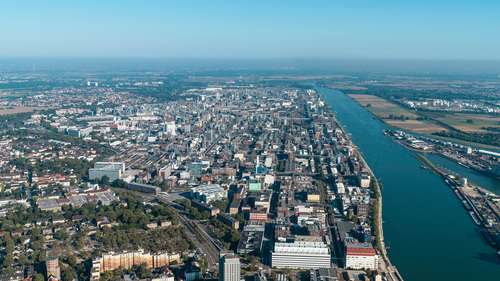The new BASF Acetylene Plant in Ludwigshafen
The time has come: BASF takes on stream its new acetylene plant at the Ludwigshafen Verbund site. It starts production with an annual capacity of 90,000 metric tons. After a transition period of several months, it will finally replace the previous plant, which went into operation in 1964.
The most efficient acetylene plant in the world
Two hydrogen and two carbon atoms: This is acetylene. The colorless gas is made from natural gas and oxygen. Around 20 plants in BASF's Production Verbund process acetylene and its derivatives.
As a versatile chemical building block, acetylene is an important starting material for many everyday products. Examples are plastics, pharmaceuticals, solvents, electrochemicals and highly elastic textile fibers. BASF customers use these products in the automotive, pharma, construction, consumer goods and textiles industries.
The new acetylene plant consumes about 10 percent fewer fossil raw materials per ton of end product than its predecessor.
A construction site with extraordinary dimensions
More than 35,000 cubic meters of concrete and 8,500 tons of steel were used in the 40,000 square meter area. At peak times, 1,500 employees were on site, laying almost 90 kilometers of pipes and 850 kilometers of cable.
A total of 440 customized fractionating columns, machines and technical equipment from twelve countries were assembled and installed. The heart of the plant is a gas separation unit 60 meters long and weighing 225 tons which was transported by ship from China to Ludwigshafen.
Categories
Investments
2016-01-01
at BASF SE, Ludwigshafen (DE)Countries
Companies
Latest news
Hycamite’s technology to decarbonize shipping awarded AiP by industry leader DNV
Kokkola Industrial Park →Hycamite’s proprietary Thermo-Catalytic Decomposition (TCD) technology offers a new approach to producing clean hydrogen by breaking down methane, the primary component of liquefied natural gas (LN...
Clariant catalysts will power the Ecoplanta: Europe's first waste-to-methanol plant
Chemmed Cluster Tarragona →Repsol is building Europe’s first plant to produce renewable methanol from urban waste The facility will use Enerkem gasification technology to produce 240 KTA of methanol Clariant will supply cata...
Lilly plans to build a new $3 billion facility to boost oral medicine manufacturing capacity in Europe for patients worldwide
Netherlands site will bring 500 manufacturing and 1,500 construction jobs while further strengthening Lilly's global supply chain
Ports of Duisburg and Rotterdam advance energy transition together
Port of Rotterdam →With this LoI, the two major European logistics hubs reinforce their goal of jointly developing sustainable transport corridors via waterways as well as future-oriented initiatives for the energy t...


